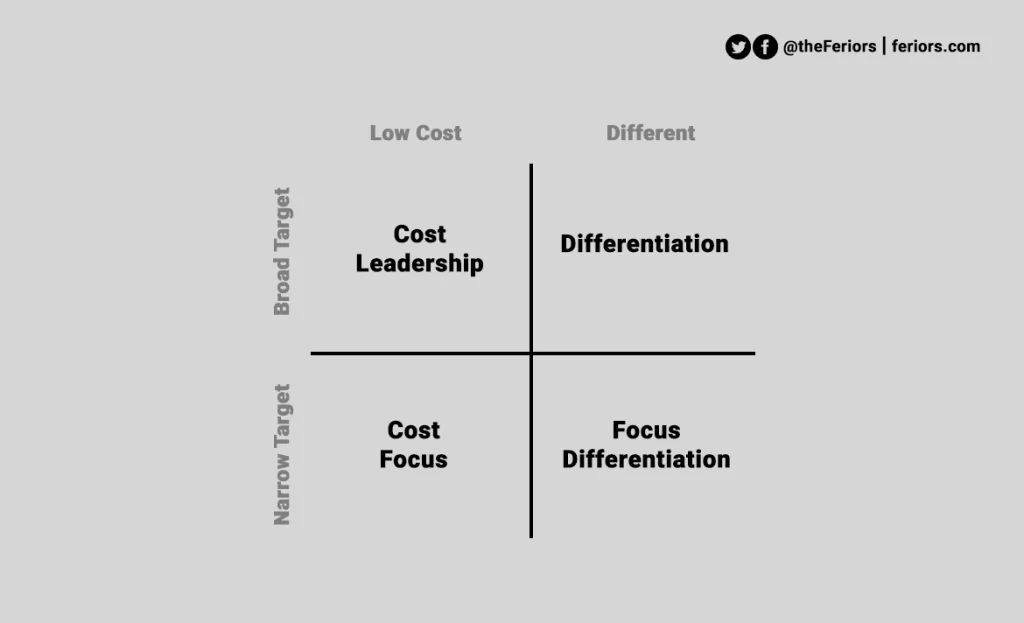What is Business Level Strategy
Business level strategy defines how each business unit in the organization competes in a market or industry. In the business level strategy, the company needs to define the competitive position in each business unit from the four types of the business-level strategy.
There are four types of competitive advantages for the business-level strategies following the Porter’s generic model: Cost leadership strategy, Differentiation strategy, Cost focus, and Focus differentiation.
- Cost leadership is a strategy that the company that focused on the low-cost product by producing products in huge amounts or with low-cost labor to compete.
- Diffetentiation is a strategy that seeks advantage from uniqueness by developing brands that stand out from the competitor.
- Cost focus is similar to the cost leadership strategy but focused on the niche market.
- Focus differentiation is similar to differentiation strategy but focused on the niche market.

To put it simply, a business level strategy is about how the business competes with other rivals in a market.
Compared with the corporate strategy, the business strategy is how the company competes in each business unit, while the corporate strategy is an invest theme for the company.
Key Points
- Business level strategy is about how the business unit competes with other rivals in a market.
- There are four types of the business-level strategy including: cost leadership strategy, differentiation strategy, cost focus, and focus differentiation.
Cost Leadership Strategy
Cost leadership strategy is a business level strategy that focused on competing with a low-cost efficiency. The business that uses a cost leadership strategy as its competitive advantage will produce an acceptable or standard product with a large amount to achieve the economies of scale in production, or produce with low-cost labor.
A company competing on a cost leadership strategy is likely to find that it does not last forever. Since price is the key point of customer choice in this market, the companies that gain a competitive advantage from the cost leadership earn less loyalty from their customers.
Differentiation Strategy
Differentiation strategy is a business level strategy focused on seeking advantage from uniqueness by developing brands that stand out from the competitor in the market. The business can offer a differentiation product in several ways such as higher product quality, superior service, or outstanding marketing.
In contrast to the cost leadership strategy, the company competing with a differentiation strategy results in strong brand identity, higher loyalty, and easy to defend the business from a low-cost competitor.
Cost Focus Strategy
Cost focus strategy is much like a cost leadership strategy but focused on a narrow market (niche market) instead of a broad market. The company uses a cost focus strategy when a business unit cannot focus on the broad market with a cost leadership strategy.
Focus Differentiation Strategy
Focus differentiation strategy is a strategy that is based on a differentiation strategy but focused on a narrow market (also known as a niche market) instead of a mass market. A business that competes with the focus differentiation strategy gains benefit from low competitive intensity and allow them to easier build customer loyalty.




